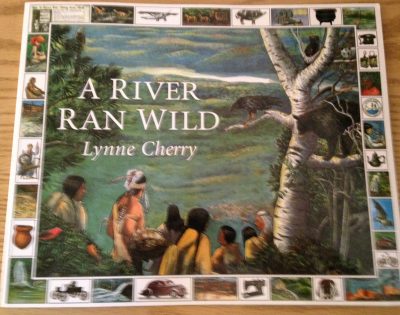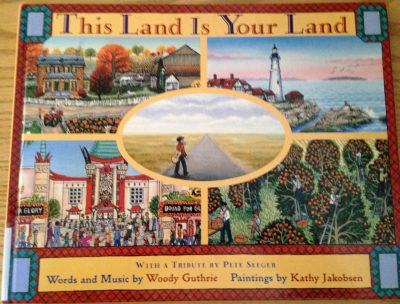Author and Illustrator: Lynne Cherry
Publisher and Year: Houghton Mifflin Harcourt, 1992
Number of pages: 25
Genre: Informational Nonfiction
This story is about the history of the Nashau River in Massachusetts and its pollution and eventual clean up by environmentalists. The book begins with the Nashua Native American people living in coexistence with the river and the forest surrounding it, being a part of nature rather than trying to bend it to their will; but over time, colonists and settlers build their homes and towns, and eventually factories, along the banks of the river and clear the forest, as well as the Native Americans, out of their way.
The white Americans pollute the river for many years until it is rendered nearly uninhabitable, but in the 1960s people protest the pollution and convince politicians to pass laws to keep the river from being polluted anymore by the factories; now the river has recovered its natural beauty.
Throughout the story there are multiple examples of picturebook codes being used to support the narrative; around most pages of text there is a frame containing artifacts, animals, and events similar to or related to the unframed picture on the opposite page. This shows the author intends to speak factually about the river but wants her audience to be drawn into its natural beauty. The Native Americans are always portrayed facing the river, the main character, which represents their respect for the river. On one page, where settler children are forcing the Native Americans away from the land, the white children are placed in the foreground of the picture and the Native Americans further back so that the largest is smaller than the white children; this speaks to the power imbalance of white people oppressing the Native Americans in the United States. There are strong themes of social justice and activism in the ideologies supported within this narrative.
The illustrations in this book were drawn with watercolors and colored pencil; they are very detailed and realistic in their proportions and shapes. The full-page spreads often contain many of the animals and objects seen around the border of the text on the previous page. Inside the front cover there is a map of the area in the sixteenth century and a timeline of important dates concerning the river or the United States; on the inside of the back cover the timeline is continued and a map of the area in the twentieth century is displayed.


